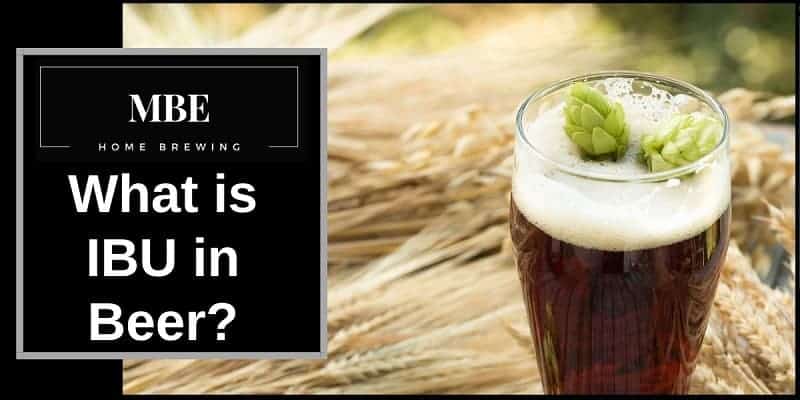IBU, also known as International Bitterness Units, is used to measure the bitterness level of beer by measuring the concentration of Alpha Acids in the hop varieties used during brewing. In this article, we’ll go over what IBU means in beer, how they’re measured, and how they affect your beer, as well as take a look at the IBU levels of some popular beer brands…
What is IBU
IBU stands for International Bitterness Units. It is a measurement scale that is used to gauge how bitter a particular beer, wine, or spirit tastes. The higher the number, the more bitterness there is in the drink. For example, an IPA might have an IBU of 70 while a lager might have an IBU of 15.
What Does IBU Mean in Beer
For the beer drinker, the IBU of a beer can be used as somewhat of a guide when selecting a beer. If a person likes a bitter beer then a higher IBU would be preferable for them, if someone prefers a more balanced beer where the malt flavors can also be detected then a lower IBU would be preferable.
The purpose of bitterness in a beer is to balance out the sweetness from the malt. Without bittering hops, beer would be overly sweet and undrinkable. There is a misconception that a high IBU means that the beer will have a high hop flavor and aroma; this is not true as it is not what IBU means. As discussed IBU is a measurement of the bitterness of the beer, not the hoppiness.
Hops are added at different times during the beer-making process in order to alter the beer in three different manners. When added at the beginning of the brewing process during the boil they have an effect on the beer’s bitterness; when added later on during the boil they will affect the flavor of the beer and when added towards the end of the brewing process including at the end of the boil and during fermentation also referred to as dry hopping they add significant aroma to the beer.
As such a beer could in fact not be bitter at all, having an IBU of 20, but also be considered a very hoppy beer if the brewer added a large number of dry hops during fermentation.
The majority of beers have an IBU between 10 and 100, however, some do have less and others can come in significantly higher. However any beer with an IBU higher than 110 has been brewed simply for the shock and awe factor of having a high IBU, it is simply a marketing gimmick because after 110 IBU science tells us that a human can no longer detect higher bitterness levels.
How IBU is Measured 

IBUs are measured on a scale. The scale starts at zero and can go to infinity depending on how many bittering agents a brewer can get into a pint of beer. Although there are reports of beers having measured at over 1000 IBUs it is doubtful this has actually been achieved and if it has, do not expect to see any on the shelves of your local craft brewery any time soon. The majority of beers will measure between 10 – 100 on the scale.
IBU of Popular Beers
The following is a list of international bittering units of some of the more popular beers on the market….
- Coors Light has 10 IBU
- Coors has 15 IBU
- Miller Lite has 10 IBU
- Budweiser has 12 IBU
- Blue Moon has 11 IBU
- Stella Artois has 30 IBU
- Heineken has 23 IBU
- Guinness has 45 IBU
- Corona Extra has 19.3 IBU
- Corona Premier has 7 IBU
- Michelob Ultra has 10 IBU
- Shiner Bock has 13 IBU
- Lagunitas IPA has 52 IBU
- Yuengling has 12 IBU
- Sierra Nevada Pale Ale has 38 IBU
For craft beers IBUs tend to be higher, the following is the average IBU range for popular craft beer styles…
- Lagers range from 5 – 25 IBU
- Blonde Ale range from 15 – 25 IBU
- American Pales Ales range from 35 – 40 IBU
- IPA’s range from 55 – 70 IBU
- Double IPAs range from 65 – 100 IBU
- NEIPA range from 35 – 65 IBU
- West Coast IPA range from 40 – 70 IBU
Last Call
Many people depend on IBU as a means to determine how hoppy a beer is, which is not what the IBU scale is intended for. It is a guide to help you determine the bitterness level of a beer, however, there are other factors to consider also such as the style of beer, the type of malts, and the amounts used as they all play a factor in determining a beer’s flavor profile.
P.S. If you make your own beer or would like to start, be sure to pick up our gift of Big Robb’s top 5 favorite beer recipes from his brewpub. Details are on the side of the blog. Cheers!
